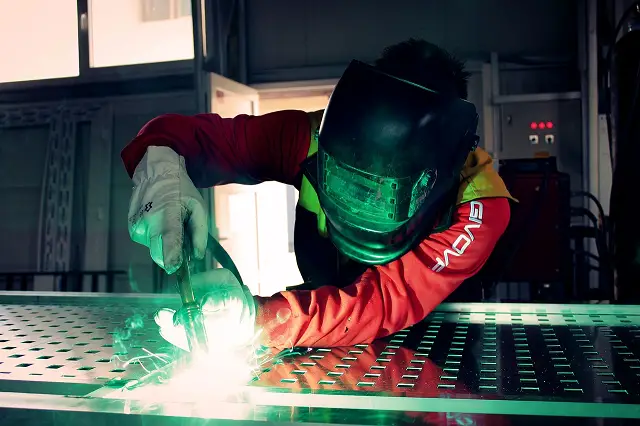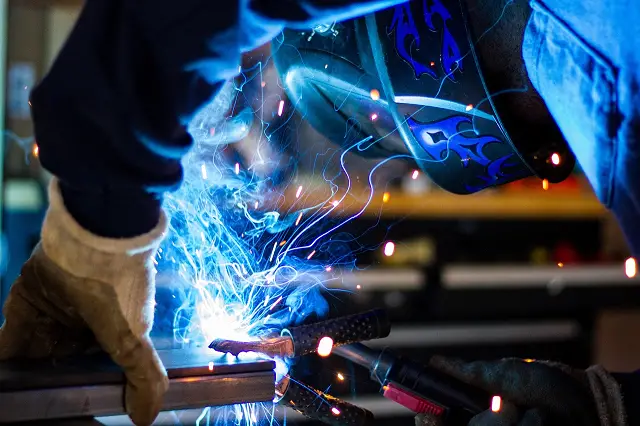The process of welding has evolved due to ever-improving technology. It is important to understand the different welding techniques to make an informed decision. The best technique will depend on the job and the specific requirements. If you’ve been wondering about the different welding types, then look no further.
Welding is the process of joining materials, usually metals, with high heat that melts the parts together. Once cooled, these materials are fused. However, there is a process of “cold welding”. This welding occurs when 2 pieces of metal touch without having a coating on them and can only occur in space.
Here are 4 things most people don’t know about different welding types.
-
The Safest Weld
The safest type of welding tends to be MIG welding. It is one of the easier types for beginners to pick up and has two different types. The first type of welding uses bare wire and the second uses flux core. Although safe and easy, MIG welding is a little more sensitive to factors like wind and dust. You should beware of this type as the two most common issues are dross and porosity. If they aren’t looked after properly, welds could end up being structurally weaker than welding carried out with the TIG method.
An advantage of this type is that a lower degree of precision is required to create good welds. MIG welding is mostly used in automotive repair as when carried out well it provides a strong and sturdy weld. It is also often used in plumbing and construction and is considered to be a better technique over the more archaic types.
-
Underwater Welding
Few people may know about the fact that welding can be carried out at the bottom of the ocean. Hyperbaric welding is the process of welding at high-pressure underwater and can be either wet or dry welding. With wet welding, the diver and electrode are exposed to the water and the external elements. The same equipment is used for dry welding but the electrode holders are designed to cool the water. The wet welding process is faster and cheaper and provides easy access to weld spots.
Dry welding is a process where a chamber is sealed around the structure that needs to be welded. The chamber is filled with a gas forcing the water out, providing a dry environment to which to perform the weld. The advantages of dry welding are that it provides a high-quality weld, non-destructive welding, and has surface monitoring. Specialists say that underwater welders need various welder models and accessories such as a diving knife, umbilical cord, and harness. An underwater welder tends to be more specialized than other welders but also provides more opportunities from their job, including travel.

-
Welding at a Low-Cost
Stick welding is a technique that is considered archaic in comparison to other techniques available. It is a manual welding technique as it uses sticks or rods made up of filler material and flux. This type of welding uses minimal equipment and is low-cost, however, the final quality is not very good. The final weld will usually suffer from porosity, cracking, and is vulnerable to bad weather, and tends to be less durable.
Although an old technique, stick welding is still popular in third world countries, where they have less access to expensive or new equipment.
Welding of this type can take place indoors or outdoors as no shielding gas could be blown by the wind. The industries that still rely on stick welding include plumbing, construction, and refrigeration.
-
No Electricity Welding
Oxy-Acetylene is one great welding type because it’s the kind that doesn’t require electricity; often used for car exhausts as it is less likely to affect the car’s electrics. It is also commonly referred to as gas welding. However, Oxy-Acetylene welding is rarely used anymore as TIG welding is more preferred. With TIG, the heat is made by running an electric current through a tungsten electrode which creates an arc that is used to melt a white creating the weld pool.
TIG is very common today as it’s a type that offers a high level of purity and a clean weld. Despite its popularity and versatility, TIG is one of the more difficult welding techniques to learn. Today, some metal-based artists use this type of welding to create their art, as this method creates sculptures. The reason for this is that TIG is able to weld delicate materials such as copper and aluminum.
Over 50% of man-made items were created by welding, including some of the most products we use like our cars and homes. Most welders are involved in the manufacturing industry and the facts above are interesting tidbits about this vast industry. With the list we prepared. we hope you have a wider understanding of the different types of this expertise.



